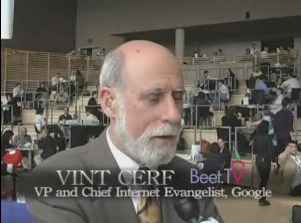Sorry about the little haitus in posts. It’s certainly not because I’ve got nothing I want to talk about! (Ryan Seacrest’s $13 million deal for American Idol and why doesn’t Robert Iger’s outrageous salary go down when Disney’s profit drops 26%, but they’ll either wait for later today or tomorrow.)
The pause has been caused by a couple of reasons: number one of which is that this week (and the next two) I’m looking after myself. Partner Greg is in Australia for a Visa renewal and I’m once again realizing how much he does to make our lives easier. (Mine particularly).
Also, we’ve been releasing new software, updating older products and revising earlier books. In fact we’ve been doing so much that I can’t announce stuff in press releases yet!
About a month back I finished completely revising Simple Encoding Recipes for the Web 2009 edition. Anyone who purchased in 2009 should have received a download link. Announcements to everyone else are coming or you can buy the update for $4.95. (It’s a complete rewrite).
Last week the revision of The HD Survival Handbook 2009-2010 was finished and, again, those who purchased in 2009 will have received an email with an update link. All other previous purchasers will have received a $4.75 upgrade offer. It’s been about 30% rewritten, almost an additional 20 pages, so the upgrade price represents the value add that’s gone into it. The “upgrade” is the full new version, not changed pages. Also this year we went with Avid support – codecs, hardware and workflow. Given that’s now a 233 page US Letter book, it’s a huge project to revise. So much has changed in a year.
In between, Greg’s been working hard to release an updated First Cuts to First Cuts Studio by adding in the functionality of one of our new applications, exceLogger. Have I mentioned we love customer feedback? It’s made Sync-N-Link a much stronger product. Naturally we want the same feedback from customers of our other products. Good, bad or feature request, all feedback is welcomed. (Begged for!)Â exceLogger was a feature request for First Cuts for Final Cut Pro, and is available as a stand-alone application for those who just want to log in Excel but merge with captured media in Final Cut Pro.
BTW this now makes First Cuts Studio great value: At $295 it includes Finisher (US$149) and exceLogger (US$69) – so the Auto-edit functionality of First Cuts is just $77!
Greg also developed two additional applications that fit perfectly in our metadata focus. miniME (Metadata Explorer) when we discovered (just four years after Apple told us!) that the QuickTime metadata from IT-based digital video sources (non-tape) is preserved in FCP but only visible in exported XML. So, Greg wrote me a simple tool to view the hidden metadata and export to an Excel spreadsheet. (That functionality is free in the demo version.) The paid version lets you remap that metadata into visible fields in Final Cut Pro.
Finally, the night we demonstrated miniME and exceLogger a friend of mine again suggested an idea for software that would report clips used in a Sequence – video or audio – as he has to provide reports to his clients, but equally useful for music reports. Greg worked on it for a while and this week we released Sequence Clip Reporter. (Yeah, we tried to find a better name but that’s descriptive and stuck.)
Now there’s a lot of work goes into writing software. There’s the work on the actual functions of the software, but then there’s questions about interface and how functions should work. Then there’s software updating to be added, serial number support to be added and feedback mechanisms added. All beyond the actual functionality.
Me, I get to design a new logo for each piece of software, write website and postcard copy, write a press release and send it out. Plus Help files need to be written so people can actually use the software. So, around any new software there’s a lot of work that doesn’t actually involve much software writing!
And that’s why posting has been sparse.
 So, how do we deliver that multiplicity of program choices – from traditional and new media suppliers – to meet customer demands? None other than Vint Cerf, one of the “inventors” of the Internet, feels that
So, how do we deliver that multiplicity of program choices – from traditional and new media suppliers – to meet customer demands? None other than Vint Cerf, one of the “inventors” of the Internet, feels that